#and at the risk of sounding pretentious like. the point was very clear! the themes were very clear! but i think theres this broad idea that
Explore tagged Tumblr posts
Text
ultimately i do actually enjoy the ghibli films i watch theyre well animated and always have an interesting way of conveying the message theyre trying to convey i just cant stand the fandomification of the films so much that i outright refuse to watch some films on principle
#like yeah the beauty of nature and of the mundane in life IS integral to the films and its important to talk about when you talk about their#meaning but the 'hashtag cottagecore' 'hashtag ghiblicore' 'hashtag i wish someone would look at me like howl looks at sophie' drives me up#the wall can we please talk about anything else. can we please talk about any fucking thing else#i saw the boy and the heron at an early showing and i really enjoyed it but walking out i heard ppl confused about the events or the point#and at the risk of sounding pretentious like. the point was very clear! the themes were very clear! but i think theres this broad idea that#ghibli films are movies you go to to just look at pretty things and turn your brain off and i think that does a major disservice to the#movies themselves. stories have meaning use your brain im begging please god im begging#sorry if this sounds mean im just complaining and being a hater
13 notes
·
View notes
Text
Lots of Quickies
Hi, I’ve been real busy lately and have started a heap of reviews that I’ve been unable to finish because of time restraints and stress. University can get on my back quickly but I’m finished now so I’m going to finish the ones I started before getting into a top 10 for films, albums and singles for the mid year (probably released before the end of June).
Avengers: Infinity War

The biggest crossover movie event ever pitted together the 20+ heroes against the big bad villain of the Marvel universe, Thanos. With a giant cast full of big names, a range of genres and a massive story to deal with, there were a lot of risks that the Russo brothers faced to make this movie. Despite it feeling supersaturated with characters and having some pacing issues, they were successful in creating a massive, climatic film, and Infinity War is close to the MCU’s best.
Avengers: Infinity War gets an A-
Breath

Simon Baker’s adaptation of the highly acclaimed Tim Winton novel of the same name had a surprising amount of hype for an Australian film. Although there is some gorgeous cinematography, especially with some of the surfing shots, the movie is bogged down by stale acting, shocking character development, inconsistent pacing, and a directionless plot. With the movie just coming under the 2hr mark, it feels overly long and bland, lacking originality in both the surfing genre and the coming-of-age genre.
Breath gets a D
Deadpool 2

Deadpool was an unbelievable success in 2016, shattering records and expectations as it became one of the most successful R-rated films ever. With the sequel they have expanded the universe, introducing ‘the X Force’ for the future of the franchise. This introduces many new strong characters, including Domino (Zazie Beetz) who steals every scene she’s in, and Firefist/Rusty Collins (Julian Dennison) who is works well with the titular character (Ryan Reynolds). Thankfully they haven’t sacrificed the quality of the film in order to universe build, with the sequel being almost as hilarious as the first, whilst digging into deeper themes of mortality and family.
Deadpool 2 gets an A
Hereditary

I generally split horror films into three categories; the aim to scare, the aim to gross out, and the aim to unsettle. Hereditary falls into the last category. It’s been a long time since a film has me shook by the end of it. This isn’t an enjoyable film at all, instead being a tiresome experience of slowly increasing tension and uncomfortableness. This makes it one of the best horror films I’ve ever seen. Toni Collette and Alex Wolff are both incredible and the cinematography and score are perfect, complimenting the story and giving the tension exactly what it needs to flourish. The use of shadows and wide shots create an atmosphere which is unlike any horror movie I’ve ever seen, giving you enough to be scared but not enough to know why. Hereditary isn’t for anyone, it is slow and there are no payoffs for the tension (like jumpscares), but its a testament to how one can build tension on film and up there with the greats of the genre.
Hereditary gets an A+
Solo: A Star Wars Story

Solo isn’t a complex movie. It doesn’t try to be a massive connection story like Rogue One, nor an epic adventure like The Force Awakens or The Last Jedi. Instead it plays to its strength, a low stakes origin story which gives a few characters some extra screen time. And it works to that extent, Han, Lando and Chewie being introduced well and having a fun adventure. It does have issues with pacing and the overcooked “shock betrayals” towards the climax starts getting cringy more than surprising but the journey is enjoyable fun, becoming a simple popcorn flick with a lot of replay value.
Solo: A Star Wars Story gets a B-
13 Reasons Why
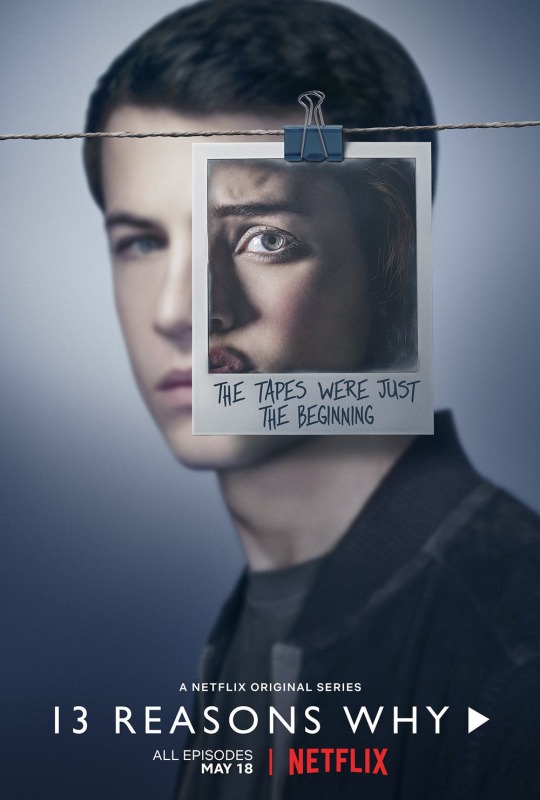
13 Reasons Why has quickly become on the most decisive and controversial TV shows in recent memory. Season One had its issues but still held itself up due to its characters and story development. To put it simple, Season Two didn’t need to be made and it’s very clear that it was forced out. Only three of the characters remain interesting with their story arcs, the script is derivative and banal, and events happen only for the purpose of the plot. This all leads up to terribly cringey moments and a predictable ending (which follows one of the most disturbing and unneeded scenes in TV). I will give the show props though for attempting a realistic court hearing and a beautiful moment in which the main cast come together in memory of their deceased friend, a moment which really should’ve ended the series.
13 Reasons Why gets a D-
Atlanta: Robbin’ Season

Donald Glover’s Atlanta is something else. The debut season explored the African American life, relationships, the Hip Hop scene, poverty and young parenthood in such a unique and fresh way. With Robbin’ Season Glover gets deeper into his characters, exploring their flaws with a realistic lens. It works as well, with each episode making a range of statements, varying from depression and grief, to dating and ‘investments’. By the end of the season the main ensemble has changed so much that season three is a complete unknown. What the show doesn’t pretend to do though is become cliched, with success still an unobtainable goal and their desire to reach it getting more desperate. To summarise, this is honestly one of the best seasons of television ever produced. Also, bonus points for Teddy Perkins being the scariest character ever conceived in a hip hop story.
Atlanta: Robbin’ Season gets an A+
Arctic Monkeys - Tranquillity Base Hotel & Casino
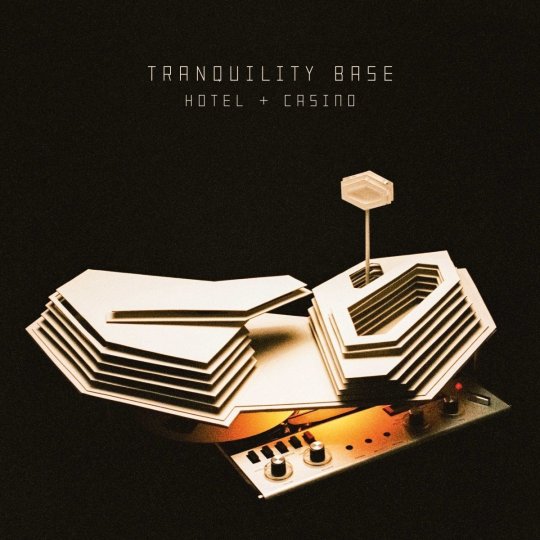
With album number six, Arctic Monkeys attempted to completely re-image themselves. Diverting from their previous, guitar driven, indie rock, TBH&C delves into a smoother, 70s psychedelic inspired direction, with most songs utilising a keyboard to accompany Alex Turner’s almost mindless ramblings (at times successful, other times forced)). Although the band have changed the direction, it seems they’ve changed it to a familiar territory, with a lot of the songs sounds like Alex Turner’s recent The Last Shadow Puppets materiel (and some seeming like the B-sides of them). Although there are stronger moments, there’s a lot of filler and some of the weakest material of the band’s quite consistent career.
Favourite song: ‘The Ultracheese’
Tranquillity Base Hotel & Casino gets a C
A$AP Rocky - Testing
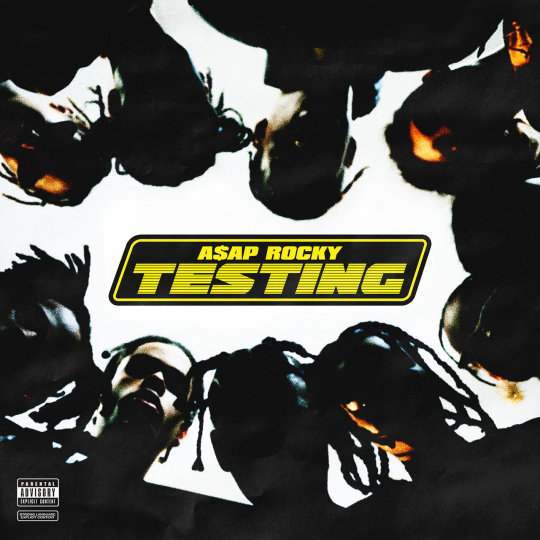
The A$AP mob’s most successful mainstream member, Rocky, has been moving at a rapid rate. His popularity and critical acclaim has been moving up with every release. Testing is both a step in the right direction and the wrong direction. Although it’s is most ambitious record to date, influenced by psychedelic, electronica and ambient music, it’s quite messy and inconsistent. Songs start well to just fall away in their second half and there’s simply too many tracks to keep interest high. A$AP Rocky is doing very different things in hip hop and Testing will hopefully continue to lead him on his path, it’s just disappointing the album couldn’t be stronger.
Favourite track: ‘Purity (feat. Frank Ocean)’
Testing gets a C+
Courtney Barnett - Tell Me How You Really Feel

I’m one of those people that didn’t rate Courtney Barnett’s breakout debut. I found it redundant and pretentious. With her sophomore though she takes a lot of what was strong from her debut and worked with it. Although there’s a clunky and repetitive middle section, the first third of the album is very good music. Barnett has a wonderful way with melodies when she tries to write melodic music and her voice, although not the strongest, can be really emotive. There’s still some rambling tracks but her development is quite noticeable and from someone who couldn’t get through multiple listens of her debut, this was an enjoyable album.
Favourite track: ‘Hopefulessness’
Tell Me How You Really Feel gets a C+
DMAs - For Now
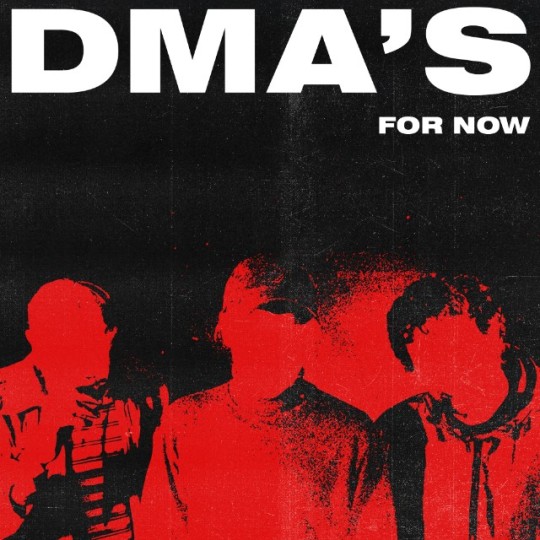
DMAs’ debut was something special in 2016. A 90s Brit-Pop revival album which was better than most 90s Brit-Pop. For Now continues their journey through British music, sharing similarities with bands like The Cure, The Smiths, Boomtown Rats and The Stone Roses. It’s very successful, with a wide range of influences and styles being incorporated in their sound. The album is much more consistent their debut, with each track being different yet based around the general ‘feel’ of the album. Unfortunately, it doesn’t have that big moment that their debut had, with no tracks really standing out as something incredible. That doesn’t weaken the album too much though, being one of the strongest releases of the year.
Favourite track: ‘Tape Deck Sick’
For Now gets an A-
Kanye West - Ye

I love this album cover. It’s very simple but very effective, representing both the minimalist, emotional, and cold album that is to come. Ye isn’t the first Kanye album to be lowkey, or sad, or left of field. It isn’t something special in his career though, an album where it really seems he condenses his talent into a short time (it is only seven songs) and really lets the production of the tracks take over, with some of the best moments being when he’s not on the mic (’Ghost Town’ has an outro which is just brilliant thanks to 070 Shake). That’s not to say Kanye’s voice doesn’t shine, ‘Wouldn’t Leave’ is a testament to his lyrical and rapping strengths, but his production is his best in nearly a decade. Although there are some weaker tracks and some cheesy lyrical moments, Ye reminds us why we continue to love Kanye, because he continues to release some of the best hip hop available.
Favourite track: ‘Ghost Town’
Ye gets a B+
Kids See Ghosts - Kids See Ghosts

If someone gave me a list of all the albums released this year before the year started, a collaboration between Kanye and Kid Cudi would definitely be my most anticipated. An album combining two of the most important voices in hip hop during the late 00s, both of them being instrumental in bringing topics of mental illness into mainstream hip hop. Where I expected Kids See Ghosts to be a darker album though, the album is almost a celebration of overcoming their demons. There are still some darker tracks, like the album closer ‘Cudi Montage’, there’s a lot of fiery tracks (like the conveniently titled ‘Fire’) and uplifting tracks (the album standout ‘Reborn’). There are some brilliant moments on this album, whether it comes from the strangely funny yet creepy sample of Louis Prima’s ‘What Will Santa Claus Say’ in ‘4th Dimension’, the ballsy attempt at scat rap in ‘Feel the Love’, or the gorgeous chorus in ‘Cudi Montage’ which features the beloved noise of Cudi humming (God bless Cudi and his biblical humming). Although the track listing works in its disadvantage some tracks do have some strange choices in direction (the end of ‘Fire’ sounds great but doesn’t fit with the song, nor the album), Kids See Ghosts is a contender for album of the year.
Favourite track: ‘Reborn’
Kids See Ghosts gets an A
Lily Allen - No Shame

Lily Allen will always be one of the most lovable cynics in music. Her career has been largely satirical takes of political and societal issues through upbeat, pop songs. With No Shame she seems to direct her satire on to herself, literally roasting herself, focusing on her recent divorce, motherhood, drug addiction, and balancing her fame and career with family life. This makes for a very deep, and at times dark, listen. Somehow though, through all this, Lily Allen has made her best album, and maybe the best album this year. Lead single ‘Trigger Bang’ is a brilliant pop song, reminding us of her humble beginnings whilst delving into criticisms of the industry and her place in it. Tracks like ‘Lost My Mind’ and ‘Everything to Feel Something’ are some of her saddest, roughly criticising her lifestyle with some beautiful production and instrumentation. And the gorgeous piano-ballad, ‘Three’, is as beautiful as it is rough, the lyrics being from her daughter’s perspective of Allen not being around for her kids. The album does allow a lighter ending, the final few tracks feeling upbeat and optimistic, something rare from albums which explore such dark themes. Although there are a couple of tracks where the dancehall vibe feels slightly too strong considering the lyrical content, No Shame is something special, and a sign of unbelievable growth for an artist over a decade old.
Favourite track: ‘Everything to Feel Something’
No Shame gets an A
Middle Kids - Lost Friends
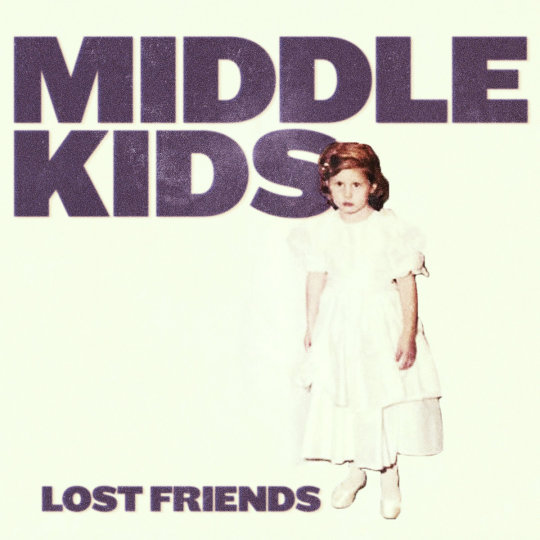
Middle Kids are slowly becoming the most underappreciated act in Australia. Their critical acclaim and industry cred are both high but their commercial success hasn’t blossomed in Australia. Their debut album looks to be their big push (it reached #10 on the ARIA album charts), and for good reason. It’s a really consistent album, with each song being a good alternative rock song. There are some lyrical moments which are average and some songs go for a little too long but each track fits well on the album and are enjoyable. For a debut, it’s a good one and really builds up anticipation to hear more from the band and see where they go.
Favourite track: ‘Edge of Town’
Lost Friends get a B
Nas - Nasir
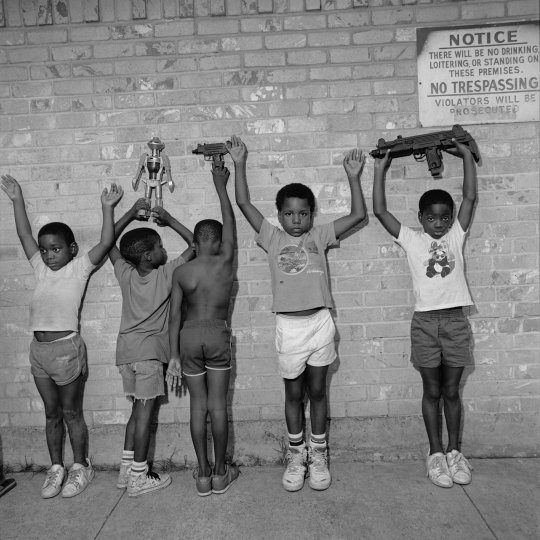
Nasir is another good release from the recent G.O.O.D Music output with Kanye West, although it’s probably the weakest so far. The production on it is really good, with the beats driving most of the songs, but Nas seems misguided and confused on a lot of the tracks. He has good messages behind the songs, referencing themes from police brutality to finances, but he doesn’t seem to really push his ideas, mostly feeling like there is a lack of passion or interest. It’s still an enjoyable album but the feeling of going through the motions is littered throughout and thus is quite disappointing.
Favourite track: ‘Everything’
Nasir gets a C+
Parkway Drive - Reverence

Australia’s premier Metalcore band, Parkway Drive, have has a mixed career for me. Their previous album, Ire, was one of their best, with the songs being meatier and relentless, not holding back at all whilst bringing new influences in. With album number six I’m not sure whether they’ve gone backwards or forwards. It’s different from their previous releases, leaning on cleaner singing much more often, and the influences are clearly from the heavy metal genre of the late 70′s to the early 90′s, but it doesn’t have a strong identity. At times it seems like a tribute album and really doesn’t standout or have its own image and sound. There are still some strong songs but a lot of the album feels like filler and for a band which has been leading the way in the genre in Australia for so long, it seems like they are now falling behind.
Favourite track: ‘The Void’
Reverence gets a C-
Post Malone - Beerbongs and Bentley’s

Every now and then Post Malone nails it and he’s definitely ridden off the success of these moments (think the songs ‘Congratulations’ and ‘I Fall Apart’). There is a hidden talent there which is covered up by the cheesy songwriting and cliched style that he presents. On Beerbongs and Bentley’s he hides this talent better than ever. This is a very mediocre album, which is made even worse since it has 18 songs and drags for over an hour. He seems to run out of things to say very quickly and there’s few moments that really standout as interesting or fresh. It’s definitely a step backwards after the far more interesting Stoney.
Favourite track: ‘Stay’
Beerbongs and Bentley’s gets a D-
The Presets - Hi Viz

One of my first introductions to music was Apocalypso, The Presets breakout sophomore album which blew away the Australian dance scene. It’s been about 10 years since that release and other than the left-of-field Pacifica, The Presets have been relatively quiet besides festival appearances. Hi Viz is the album they needed though. There are so many certified bangers on this album, from the lead single ‘Do What You Want’ to the giant album closer ‘Until the Dark’. They also bring in some really strong features, with both Alison Wonderland and DMAs shining on both their feature tracks. Although there are some filler in the album, and it does get repetitive towards the middle, it’s an excellent return to form from the band and establish them back at the top of the Australian dance scene.
Favourite track: ‘Feel Alone’
Hi Viz gets a B+
Pusha T - Daytona

Daytona was the first album from the G.O.O.D Music trail of releases of the past month and it really kicked off the project well. The production is really strong, the instrumentals on each track are solid, Pusha T’s lyrics are great (like usual) and the features fit nicely. I think the major weakness is that at times Pusha T’s voice doesn’t fit nicely with the music, especially with the mixing of his vocals at times. It seems to sit too high in the mix and seems out of place. Other than that though it’s a really solid album and an enjoyable listen.
Favourite track: ‘If You Know You Know
Daytona gets a B
#avengers infinity war#deadpool 2#breath#solo a star wars story#hereditary#13 reasons why#atlanta robbin season#arctic monkeys#a$ap rocky#courtney barnett#DMAs#kanye west#kids see ghosts#lily allen#middle kids#nas#parkway drive#post malone#the presets#pusha t
15 notes
·
View notes
Text
In Search of the Lost...CLM
It’s Springtime in Boston – new beginnings, growth, shaking off the doldrums of winter (especially this recent one!!) In that spirit, I’ll throw off my dusty 2020 sanitized cloak and admit to you all something unprofessional, yet based in beauty and a deep love – some might call it a devotion. My beloved?? The Moody Blues. Yup, I’m a devoted fan – have been for decades. Make your elevator music joke – I don’t care. I know – nowhere nearly as cool as Post Malone, T-Swift, Dua, Doja, Don’tya, whomever. But majestic, original, thoughtful, and DEEP. Long ago in a New England portion of the galaxy far, far away, a suburban ethnic kid picked up a handful of vinyl albums at a yard sale, and the incredible double album “This Is The Moody Blues” was in the pile. I was immediately hooked. Have seen the boys several times in concert, and they never disappoint (though to steal a line from Don Henley about his own band, they don’t exactly dance around the stage – they mostly loiter.)
By now you’re probably thinking “the connection between THIS and Contract Lifecycle Management systems (“CLMs”) will be the most tortured bootstrap in history”, but if you followed the Moodies, it would be so very clear and obvious. Back in the medieval era (certainly not the dark ages) the boys released an album called “In Search of the Lost Chord”, an appropriately pretentious title implying not only that the Moodies knew of a unique, world-changing musical chord (typically 3-5 notes played together simultaneously), but that they, and no one else, found it! If your experience evaluating CLMs has been anything like mine over the past few years, you’ve been on a similar quest, but with less than satisfying results. Here are some of my impressions from my search for a perfect CLM.
Keeping with the musical theme for just another minute, my other non-work passion is synthesizers. I’m the proud owner of 6, ranging in age from 29 years old to 4, with the toddler being an absolute musical powerhouse of seemingly infinite possibilities called the Yamaha Montage. The synthesizer market exemplifies Moore’s Law, that old chestnut that says the number of transistors per silicon chip doubles every year, with corresponding performance increases and speed gains resulting from denser integrated circuits. That’s certainly the case with my synths. My boat anchor of a keyboard in 1981, an Italian-built instrument called the Crumar Orchestrator (no longer with us), was very heavy, cost $1,050 (Armenians never forget prices), and produced a whopping 5 sounds, though two sounds could be layered together. Needless to say, the new Yamaha plays rings around it, for only a few bucks more, but requires extensive training and synth engine tweaking. No one could seriously consider the two as peers – the Yamaha is a high-end laptop embedded into an 88-key digital synth with touchscreen programming that would make Dr. Moog himself drool. And yet there was something wonderful about the simplicity, intuitiveness, and real-time access of the Crumar’s sounds. In CLM terms, the Crumar didn’t have many bells or whistles, but did the job, and did so quite well and dependably.
Back in 2016, I had the pleasure of serving the team at SmashFly Technologies. We realized we needed a high-functioning CLM, and after a thorough RFP process, we selected SpringCM as our first system, enjoying a fantastic relationship with both the SpringCM team in Chicago and the platform itself. The integration of our prospects’ contract forms into the platform for redlining, version control, and eventual e-signing was a key element of our use case, shortening the sales lifecycle substantially. And internal workflows created with the system were embraced by both our Sales and Customer Success teams for both new and upsell/renewal business, respectively. Did the platform have every possible mind-numbing feature? No, but it was always there when we needed it and fit our business needs perfectly, with secure, real-time support and document processing. Definitely a Crumar relationship!
Author and theologian Richard Foster has written often on the virtues of simplicity, counseling one to “strip away all excess baggage and nonessential trappings”, and even the Moodies themselves, despite being known for complex orchestral production and cosmic lyrics, have echoed this concept (yes, with another keyboard reference), singing:
There's one thing I can do Play my Mellotron™ for you Try to blow away your city blues Your dreams are not unfound Get your feet back on the ground
So, in the spirit of the Moodies’ grandeur (pomposity?), I’ll attempt to blow away your CLM blues and get your feet back on the ground with an overview of my CLM experiences and suggestions for core requirements, particularly with respect to recent CLM market developments. As you may’ve guessed, I tend to lean toward simplicity, but as someone who has embraced technology since my garage band days, I get as excited about bleeding edge product developments as much as anyone, so I’ll try to keep the scales balanced.
In my startup-oriented world (ranging back 9 years), speed is everything. Correctness is assumed, whether it be contract version control, updated pricing/BAFOs, or proposal submissions – those are as fundamental as breathing. But speed varies greatly between organizations and markets. A twenty-four month (or longer) RFP pursuit under a federal government procurement, being run by a large publicly-traded company, doesn’t have the same day-to-day time pressures as the end of a quarter at an IT startup, particularly one that is chasing B or C-round funding or later investment/sale avenues. So like my beloved Crumar, a selected CLM must be fast, intuitive, and dependable. I can’t write code, and never want to be deep into programming instructions of my CLM; if we’re at that point, we’ve failed. As I’ve told my engineering colleagues for years, “this company is in DEEP trouble if you want me to write code”. (The corollary to that, of course, is “and we’re in equally deep trouble if engineers are interpreting contract terms”, but I digress, and you know I love you guys. )
Any system that has a steep learning curve, plods along in terms of system performance, and/or has numerous updates (so-called “upgrades”), patches, and maintenance downtime beyond market standards must be avoided.
Uptime availability should be as close to 99.9% as possible, if not higher. If you’re reading this, you’re probably a contracts, legal, or compliance pro, so you know any firm that won’t state that uptime availability percentage specifically in the contract’s SoW or SLA is telling you they’ll never hit it; run for the hills! Similarly, data center operations should be with a well-established, secure North American supplier (you know who they are – they certainly don’t need free advertising from me) to the CLM company, and the history of that relationship should be explored. A firm that bounces between all of the major cloud providers may try to argue that they’re always trying to get the best deal for their clients, but for my money, stability, security, and dependability are best served by a long-standing CLM-cloud provider marriage.
In addition, CLM implementation times should be clean and short. If you hear too many horror stories in the market, or references to “Well, Sue, it all depends on the amount of legacy data you’ll be transferring into our Platinum Platform, and what condition your data is in”, keep looking. You haven’t played the lost chord – just some sour notes. We all understand that dysfunctional customer data is not the responsibility of a new supplier, but my experience has been that a supplier who tries to foist performance concerns on the prospect early in discussions is typically the one who has the most problems during the contract term, and as a result is either terminated or churned at renewal time.
Speaking of pet peeves and more bootstraps, you may not believe there’s any connection at all between CLM demos (or the lack thereof) and a long-term positive relationship, but I maintain there is, and have experienced it. A company that plays hide-the-ball with its product may not be as confident in its features as its collateral or website proclaim. I certainly appreciate the arguments against a “demo right out of the gate” view – limited SE resources, non-serious buyers just trolling, numerous demos placing company IP at risk, SDRs need more due diligence discussions to properly tailor the demo, need to avoid multiple demos for the same prospect (so wait a bit and get all stakeholders on the same call), etc. But any experienced SDR or Account Exec/Regional Sales Manager should be able to tell from the first discussion with a prospect whether she/he is serious, has an immediate need and budget, and has authority to move forward or needs to have a senior exec (or two) participate in any demo. Hiding the ball from a serious prospect is counter-productive to the aims of the relationship and quite frustrating.
Wow – now I’m fired up. Given that I’m writing this late on a Tuesday, perhaps I should play the Moodies’ classic hit “Tuesday Afternoon” and mellow out!
My friends know that I LOATHE the use of jargon, but I have to use the phrase “table stakes” just once here – it’s in the context of a CLM’s e-signature capabilities. Any CLM with kludgy e-signature placement, or non-intuitive use (or worse, multiple drop-downs/windows before insertion in a document) should be avoided. Simplicity really should reign here. In most companies the contracts or legal reviewer is not likely to be the signatory, so any digital doc in a CLM should be easy to prepare and forward for senior management’s execution.
Your company’s templates and forms, and especially your Fallback 1 and Fallback 2 clause libraries, will require a bit more heavy lifting from the CLM partner, but given the evolution of CLM systems across the board, this process should be fast and clear. And the redlining of a prospect’s Word doc should never send the CLM into a spin.
Your selected CLM should have easy-to-create workflows that integrate with your company’s CRM, and appear as a widget or new page within the Account or Opportunity section thereof. If workflow creation requires multiple calls to the CLM provider’s tech support team, or worse, a purchase order for fee-based tech services, you’ve selected the wrong company. Which leads me to report generation…
In the synthesizer world, drum and percussion effects generated from the keyboard sound cool on the sales floor of Guitar Center or Sam Ash, but in terms of live performance, I can unequivocally state I’ve never used them, and never given them a second thought. And my studio friends tell me they’d rather use software-based drum sounds & loops than 90’s-style percussion from their synths. Basically, a “bell” of limited value. Report generation hardly falls to that level, and my CFO and CMO depended upon recurring reports generated automatically from the CLM, as did my SDR Manager. But ad hoc ROI report generation gets too much press, in my humble opinion, and may be touted at great length by your intrepid CLM sales rep. As far as I’ve seen, every CLM in 2021 has report generation; I wouldn’t be too swayed by a firm that crows about this as a product discriminator, unless your senior management is asking for numerous non-standard reports other company systems can’t provide.
I hope my earlier levity about engineers doesn’t generate too much hate mail – I have the utmost respect for them, as they know; that same sentiment applies to my beloved Sales colleagues. But having said that, for the safety of all, I only provide my Sales pros with access to NDA templates. That’s it. Your CLM will certainly have a rules-based structure where you can provide, or remove, access to forms or project documents based on department, unit/function, individual name, or transaction. Again, simplicity should be the rule, not the exception here. Ask for sandbox or live “dummy” system access and have the provider walk you through the gory details of this process. You should be able to do it alone, on a real-time basis; time-sensitive special projects (often M&A related) sometimes arise with little notice, and with strict guidelines about disclosures to other team members. If you can’t readily change access rules yourself, you’ll have problems, and will spin your wheels – while the clock is ticking and the C-suite is waiting for a reply – all because this process is too difficult.
Every app on the planet needs to have mobile functionality, and CLMs are certainly no different. As we emerge from COVID travel restrictions, the need for airport/Acela/in-meeting access to your CLM will return to 2019 levels. Any hiccup or frustration with the mobile use experienced during demo should receive substantial negative demerits in your evaluation phase. I’ve seen everything from a unique mobile app for a vendor’s platform to the identical (though hard to read) platform access using a browser on your iPhone or Android device. This comes down to personal preference, and what an otherwise high-scoring provider is selling. So long as core functionality is present in a mobile platform, I wouldn’t make a final decision based solely on this.
Lastly, a CLM platform’s ability to host a private document that could be shared via public URL, such as your company’s Supplier Code of Conduct or SLA, should be easy to find today and require nothing but the most basic training steps to create.
I suppose no essay on technology would be complete today without a reference to AI or ML. And pitch deck references to AI/ML are just as ubiquitous; there isn’t a major CLM player who isn’t emphasizing AI. However, make sure a vendor’s AI solution isn’t substantially dependent on a third party’s tool; I know of at least three heavyweights in this sector whose AI is subject to the vagaries of their supplier relationship with subs.
The distinction between strategic roadmap and current offering is an important one as well. No one wants to repeat the selection and implementation process any time soon, so a company’s track record of creative product development, as well as its record of actually delivering those future-proof features, should be an important part of your investment strategy. Today’s flavor of the month that either doesn’t have the R&D resources, including funding and personnel) or technical acumen (or both) to evolve the product over time will not be a solid choice, particularly if your company is in high-growth mode.
Another core requirement in 2021 is digital transformation. Where e-contracting automated processes within the Contracts, Legal and/or Sourcing department, digital transformation takes the data in our world and shares it with finance, ops, HR, and other company systems, beyond your CRM. If your vendor doesn’t at least address this, keep looking.
Which brings us back to synthesizers. Do I miss my Crumar? Absolutely. Was one of COVID’s silver linings less time sitting in traffic and more time embracing my Yamaha….oh, and of course my family? Heck yes! But my favorite synth of all-time is actually a wonderful instrument called the Korg N364. It’s modern-ish, but with many live performance capabilities and instant access to over 500 sounds. It’s absolutely bulletproof in terms of construction and reliability, and is playable right out of the box. While the Moody Blues never did find The Lost Chord, I’m convinced one could come VERY close with uninterrupted time, extreme creativity, and the Korg machine. It’s the perfect balance between features, reliability, and intuitiveness.
I hope some of these thoughts help you find the best CLM for your team!
0 notes